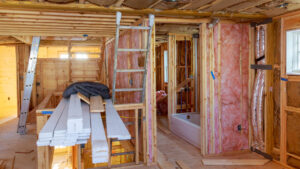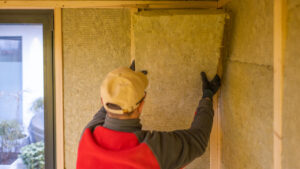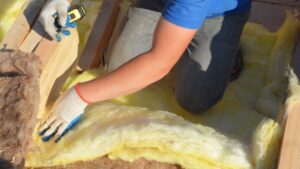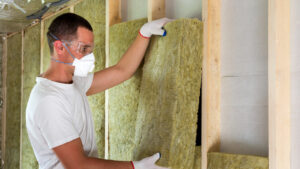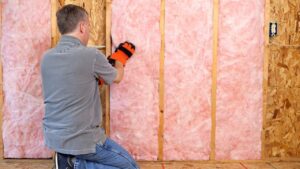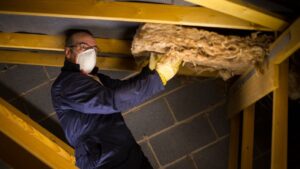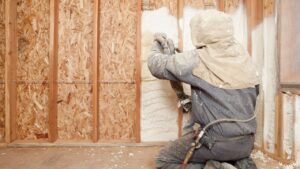Older homes are charming with character but can be notorious energy sieves, especially in areas like Hampton Roads and Norfolk, with their distinct climates and historic neighborhoods.
Insulation is the unsung hero, keeping history intact while embracing modern comfort.
As homes age, the critical role of proper insulation becomes clear, whether it’s in the attic, ceiling, behind the walls, or nestled between joists.
It’s a delicate balance between preserving the past and optimizing for present energy conservation.
Keep reading to discover which insulation materials strike this balance best for your classic abode.
What is the Best Insulation for Older Homes?
The recommended insulation for a historic home in Virginia is one that is reversible and does not conceal important building elements.
According to the National Trust for Historic Preservation, spray foam insulation is not recommended for historic buildings as it conceals roofing members and is not reversible. Additionally, old cellulose spray-in insulation can be problematic if there is no vapor barrier, so it’s important to ensure that all insulating measures are reversible.
The Virginia Department of Historic Resources also provides guidance for historic homeowners. This can be a valuable resource for understanding the specific requirements for insulation in historic homes.
It’s important to consider each home’s historic, unique characteristics and seek advice from professionals with experience in insulating historic properties. Choosing insulation for an older home is crucial; it requires a balance between efficiency, safety, and preserving the structure’s integrity.
Materials like fiberglass, mineral wool, and cellulose are often recommended for these buildings because of their versatility and ease of installation. Yet, not all insulation types suit every ancient nook or cranny – whether it’s a drafty attic or a damp basement, each zone may call for a distinct approach.
Let’s break it down: attics cry out for unique care. Roof, siding, and attic spaces often benefit from loose fill or batt insulation, which implements a barrier against heat transfer. These solutions, such as fiberglass or mineral wool, can be easily added to existing finish and are effective at maintaining a stable indoor climate:
1. Fiberglass: Popular, cost-effective, and fits between joists and studs.
2. Mineral Wool: Dense, with strong fire resistance and soundproofing qualities.
3. Cellulose insulation: A plant fiber-based choice that packs tightly into spaces, ideal for blocking out drafts.
Insulation must combat the risk of water damage and mold growth in the basement and crawl space, where moisture and mildew might be. Polyurethane spray foam, with its expansive qualities, seals gaps and repels water, while rigid foam boards provide a moisture-resistant barrier.
Some manufacturers also promote waterproofing methods during insulation installation to deal with water and moisture issues. Properly insulating these areas increases energy conservation, preventing the home’s heated or cooled air from escaping through its foundations.
3 Common Insulation Found in Old Homes

Insulating older homes poses unique challenges, often unveiling materials from bygone eras that homeowners might not be familiar with today.
Amongst the most common insulation types found during renovations are:
– Vermiculite – an airy, pebble-like substance once favored for its heat resistance
– Fiberglass – known for its fluffy, batt-like form and ease of installation
– Mineral wool – with a fibrous composition praised for its thermal and sound-dampening abilities.
– Cellulose – mainly made from recycled pare or newsprint and is very versatile.
These materials, each with distinct properties and installation nuances, are integral to upgrading historic residences’ heat retention and energy efficiency.
Vermiculite
Vermiculite insulation, often discovered in the attics of older homes, harbors unique properties that once made it a favored choice for home heat management. This granular material, lightweight and efficient, was particularly adept at trapping air and reducing heat flow. Homeowners should note that while untouched vermiculite poses little risk, it can sometimes contain asbestos, demanding professional evaluation before disturbance.
Here’s what you should know about vermiculite:
– Lightweight and air-trapping characteristics ensure effective insulation.
– Efficiency in older homes, without the need for modern retrofitting.
– A professional assessment is needed due to potential asbestos content.
Fiberglass
Thanks to its wide availability and straightforward installation process, Fiberglass stands out as a go-to for rejuvenating insulation in older homes. This insulation variant, made from fine glass fibers, is adept at filling the attic and cavity wall, cutting energy costs, and improving overall comfort. Moreover, its affordability and practicality remain a top choice among insulation contractors tackling historical property upgrades.
Mineral Wool
Mineral wool stands as a stalwart in the insulation pantheon, particularly valued for its remarkable durability and fire resistance. Its dense makeup not only aids in reducing heat transfer but also serves as an effective sound barrier. This makes it an excellent choice for homes situated in noisy environments.
Recognized for enhancing energy efficiency and providing robust protection, mineral wool is a sterling option in old home insulation. It is ideal for older homes needing modern thermal upgrades without compromising structural integrity.
Common Problems With Old Home Insulation

Stepping over the threshold into an older home, one may encounter the charm of yesteryears alongside hidden challenges lurking within the walls. Wood rot, peeling paint, and the presence of mold represent common adversaries for homeowners trying to preserve the integrity of their abode’s structure while enhancing its insulation.
These issues affect the building’s aesthetics and stability and significantly impact its insulation efficiency. Addressing these problems is vital for energy retention, heat transfer prevention, and the overall health of an older home’s living environment.
Wood Rot
Older homes often grapple with wood rot, a formidable foe that manifests within the bones of the structure. This deterioration is the result of persistent moisture contact, inviting fungus to feast on timber:
1. Moist conditions act as a breeding ground for wood-destroying fungi.
2. Rotted wood undermines the effectiveness of installed insulation.
3. Proactive moisture control is key in combating and preventing wood rot.
Peeling Paint
In the narrative of an older home, peeling paint is often a signpost indicating deeper insulation issues. It suggests that breathability and moisture regulation within the walls may be inadequate. This, in return, leads to water vapor becoming trapped and subsequently deteriorating paint layers. This not only tarnishes the visual appeal of the home but can also hint at insufficient insulation, which allows for moisture to seep into wall cavities.
1. Peeling paint signifies potential moisture imbalance within walls.
2. Trapped water vapor suggests a need for better insulation solutions.
3. Visual damage may reflect deeper issues affecting thermal regulation.
Mold
The stealthy intruder of mold in an older home’s insulation is a red flag for moisture issues. And it endangers the structure’s health and also the residents.
Mold thrives in damp, poorly insulated environments, breaking down organic materials and compromising indoor air quality. It becomes a pressing matter for homeowners to address the root cause, ensuring that their insulation is adequate and effectively managing humidity levels within their homes.
1. Mold’s growth signals a need for improved insulation and moisture control.
2. Breakdown of materials and poor air quality threaten home integrity.
3. Homeowners must prioritize rectifying insulation to protect their living space.
What are the Two Main Types of Polystyrene Insulation?
The two main types of polystyrene insulation used in building and construction are expanded polystyrene (EPS) and extruded polystyrene (XPS). EPS insulation consists of small polystyrene beads that are expanded and fused together using steam, creating a lightweight and resilient closed-cell rigid foam board or block. EPS provides good insulation value for drywall sheathing, roofing, and foundations and is also very moisture resistant.
XPS is a denser, extruded form of polystyrene insulation produced as continuous foam boards featuring high compressive strength and R-values. XPS’s dense, uniform structure enables it to resist moisture absorption better than EPS. It is commonly used for exterior sheathing, below-grade concrete work, and under-slab insulation.
Both EPS and XPS polystyrene insulations deliver efficient, long-term thermal resistance in a cost-effective rigid board. Their combination of rigidity, versatility, and moisture resistance make them a popular choice for insulating and weatherizing buildings. Polystyrene is one of the most commonly used for floor insulation.
What to Do When You Need Your Historic Home Insulated in Norfolk or Surrounding Areas

If you own a historic home in Norfolk or the surrounding Hampton Roads area, choosing the right insulation is essential for comfort and efficiency. Your beloved property deserves materials that respect its character while boosting energy conservation, whether it’s refreshed attic insulation or updated crawl space protection. Different parts of your home may need distinct insulation strategies: from thermal resistance in the attic to moisture control in the basement.
| Home Area | Insulation Need | Material Suggestion |
|---|---|---|
| Attic | Thermal Resistance | Fiberglass, Cellulose, Mineral Wool |
| Basement/Crawl Space | Moisture Control | Spray Foam, Rigid Foam Board |
| Wall/Joist Spaces | Vapor Barrier and Insulation | Vapor Barrier and Insulation |
Local insulation contractors with expertise in older buildings should be considered for any project: they understand the climate and building codes of the Hampton Roads region. Professionals are best equipped to suggest suitable materials, such as fiberglass, mineral wool, or spray foam, which comply with current energy standards while preserving the house’s historical elements.
Conducting a thorough energy audit can reveal how and where insulation improvements can make a significant difference for homeowners set on maintaining their property’s vintage authenticity while ensuring proper installation. With tailored solutions from seasoned experts, your beautiful historic home can achieve modern-day energy efficiency without sacrificing its unique charm.
Key Takeaway
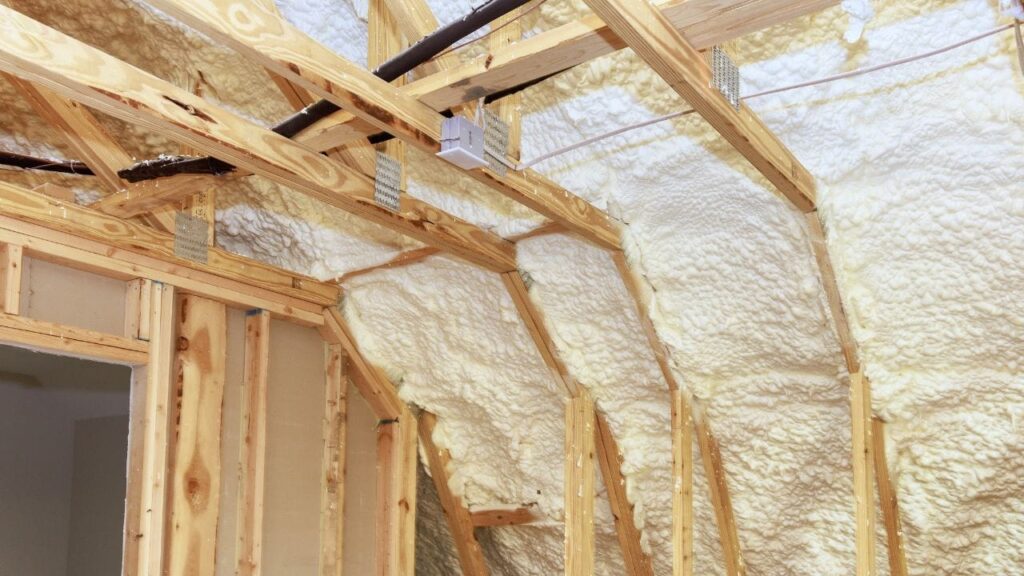
While older homes have a unique charm, their aging structures can cause energy inefficiency. Proper insulation is key to preserving historic integrity and improving comfort and efficiency. The right insulation strategy depends on the specific areas of the home.
Recommended materials are reversible and effective for old constructions. However, uncovering old insulators like vermiculite needs evaluation. Mitigating issues like rot, peeling paint, and mold is also important.
Experienced contractors familiar with regional building codes can help select suitable insulation materials and techniques to revitalize a historic home’s energy performance without sacrificing its nostalgic ambiance.
FAQ
What is the Most Common Thermal Insulation Material in the US?
According to the Department of Energy, fiberglass accounts for the vast majority of insulation materials applied in American buildings and construction. Fiberglass insulation consists of tiny glass fiber strands woven together into a lightweight, fluffy material. It comes in several forms to suit different applications, including flexible batts, rolls, loose-fill, rigid boards, and duct wraps.
This versatility, thermal performance, moisture resistance, affordability, and easy installation have made fiberglass the insulation of choice for over 75 years. The finely spun glass fibers expertly reflect and trap air within the insulation to deter heat flow. Whether keeping attics cool, basements warm, or sound out, fiberglass insulation has proven itself the workhorse insulator across America.
What is the Purpose of Building Insulation Materials?
The fundamental purpose of building insulation materials is to slow heat transfer, maintaining a more consistent and comfortable indoor environment at a reduced energy cost. Insulation achieves this by trapping tiny air pockets within the material, significantly impeding heat conduction and convection.
When properly installed, insulation seals small cracks and openings that can allow hot or cold outdoor air to infiltrate the building. This containment of indoor air enables HVAC systems to operate more efficiently. Additionally, insulation's resistance to thermal transfer helps prevent moisture issues like condensation and mold growth on cold surfaces. It also provides important fire resistance while limiting the transmission of noise.
What is the Ideal Insulation around Plumbing?
For insulating plumbing pipes, fiberglass is an excellent insulation choice. Fiberglass pipe insulation consists of molded sleeves or wraps made from fine glass fibers bonded with a binder. This material balances effective thermal insulation with durability, ease of installation, and affordability.
The fibers trap air pockets, slowing heat transfer and helping maintain water temperature as it flows through the piping. Fiberglass pipe insulation is also advantageous for its ability to absorb noise and vibrations from water movement, preventing disruptive pipe noises. Additionally, fiberglass provides reliable insulation in extremely cold conditions below freezing.

